Gorgonzola vs. blue cheese: Which one’s better? While neither option is a widespread favorite among casual buyers, these cheeses have enough fans to ensure they’re steady sellers. Here’s what you should know about these cheeses.
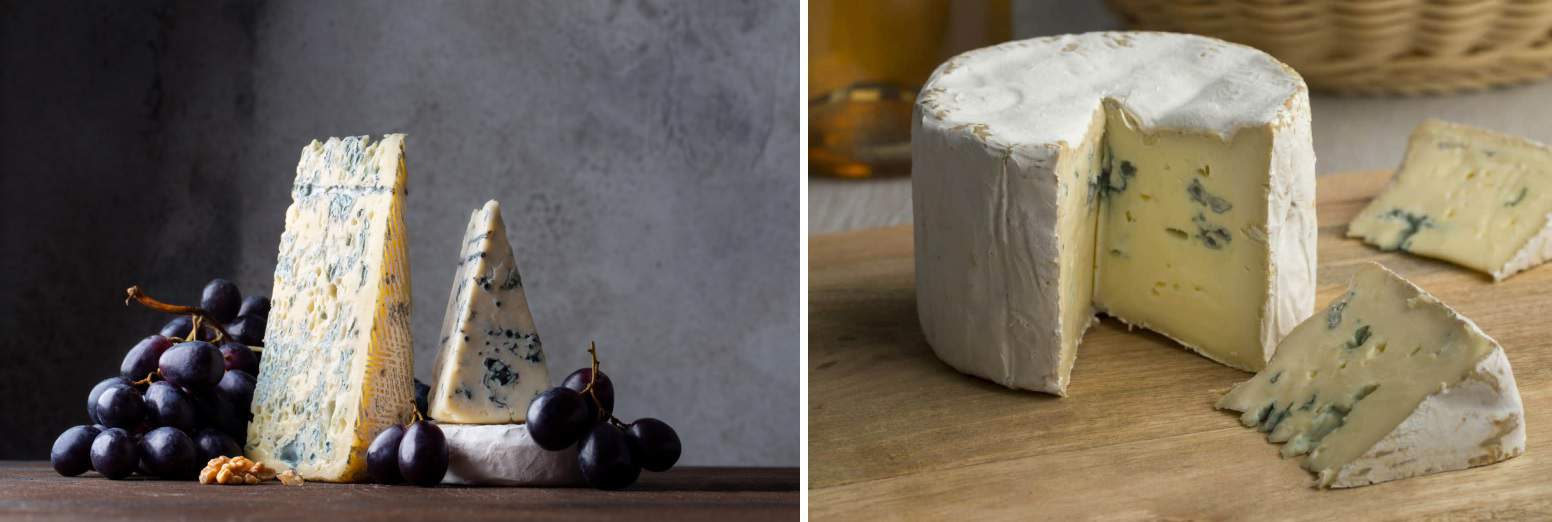
Gorgonzola vs. Blue Cheese: The Facts
Gorgonzola and blue cheese are closely related products, both featuring veins of blue mold that give them a distinctive flavor and appearance.
| Attribute | Blue Cheese | Gorgonzola |
| Type of Milk | Cow, Goat, or Sheep | (Usually) Cow’s |
| Flavor | Acidic, Saltier | Milder, although still strong |
| Texture | Firmer, slightly crumbly | Softer, usually smoother |
| Origin | Worldwide | Specific locations in Italy |
What Is Gorgonzola
What is Gorgonzola cheese, you ask? Gorgonzola is an ancient style of making cheese – so old that we aren’t entirely sure of its origins. However, the popular theory holds that Gorgonzola comes from a town with the same name located near Milan, Italy.
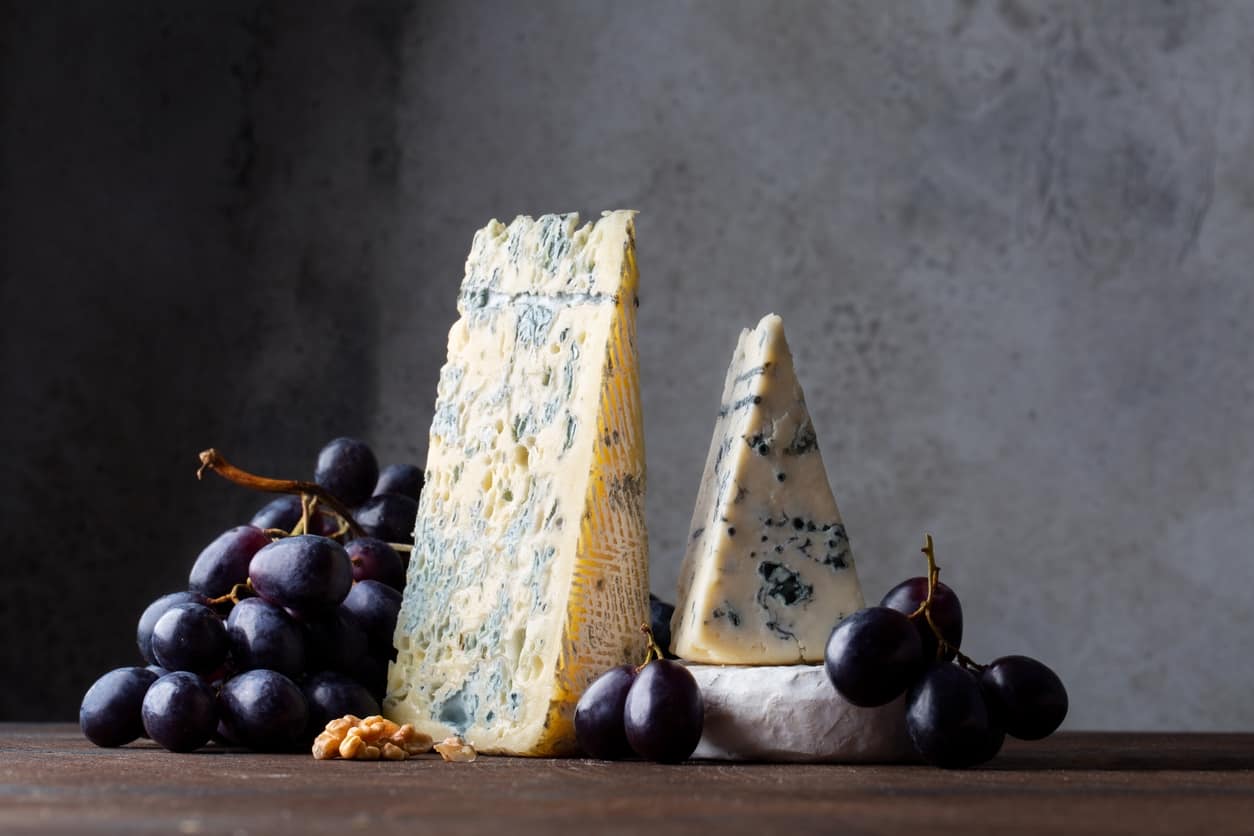
The area has been popular with cheese-making for centuries thanks to local natural caves where the cool average temperatures are ideal for aging cheese.
Today, real Gorgonzola cheese is a specialty product, complete with an entire industry group dedicated to it. Genuine Gorgonzola has the DOP mark, which translates to Protected Designation of Origin. Cheeses produced outside Italy’s traditional region don’t technically qualify as Gorgonzola, even if the manufacturer wants you to think otherwise.
Is Gorgonzola Blue Cheese
Yes. Gorgonzola is a specific type of blue cheese, easily identified by the distinctive blue veins of mold that go through it. We’ll discuss blue cheese, in general, later in this article. For now, the main thing to remember is that Gorgonzola is one type of blue cheese, but others exist.
What Does Gorgonzola Cheese Taste Like
Gorgonzola’s flavor varies slightly depending on the production method. However, it usually tastes salty and creamy, especially when still young. Older versions of this cheese tend to have a sharper and more obvious bite of flavor.
Gorgonzola is generally milder than other blue cheeses, even after aging. It’s traditionally made with cow’s milk, although rare local versions may use goat’s milk or sheep’s milk instead. Most people prefer the creamy cow milk version, making that the dominating type found on the market.
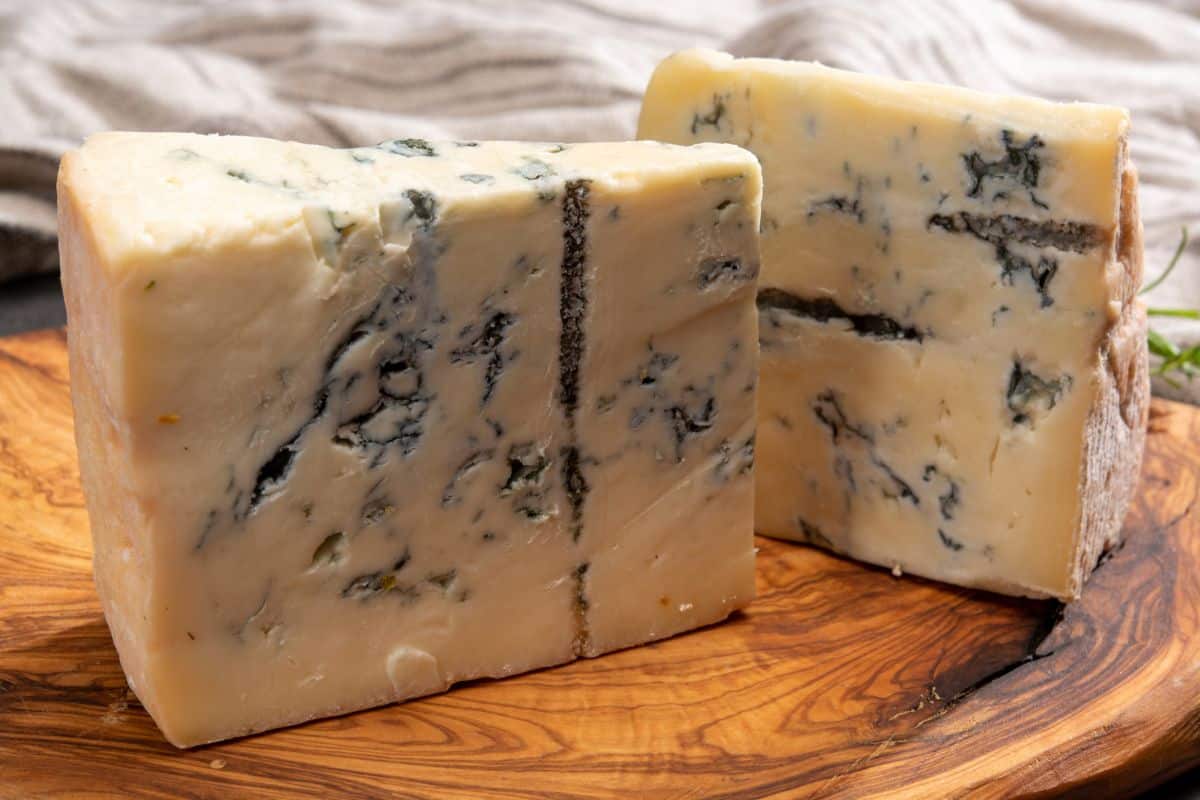
Is Gorgonzola Healthy
Yes. Gorgonzola is a surprisingly healthy cheese, offering about 6.1 grams of protein per 1-ounce serving. It also has about 8.1 grams of fat, which isn’t too high. Most standards rate Gorgonzola as a nutrient-dense food, which means you can get many health benefits from a comparatively small amount of it.
Gorgonzola has a good amount of calcium, though only about 12% of the recommended daily amount per serving. However, its impressive amount of protein makes it an ideal choice for vegetarian diets, as milk proteins contain all necessary amino acids.
Is Gorgonzola Safe During Pregnancy
Can you eat Gorgonzola when pregnant, you ask?
In general, you should not eat Gorgonzola while pregnant. It may be safe to eat if you thoroughly cook it, but experts recommend avoiding soft cheeses like Gorgonzola while pregnant because of an increased risk of listeriosis.
Listeriosis is an unfortunately common infection in pregnant women, occurring at a significantly higher rate there than in the general population. Although not overly dangerous to a mother, listeriosis can be fatal to fetuses.
Hard and semi-soft cheeses are generally safe during pregnancy, but fully soft options like Gorgonzola are not.
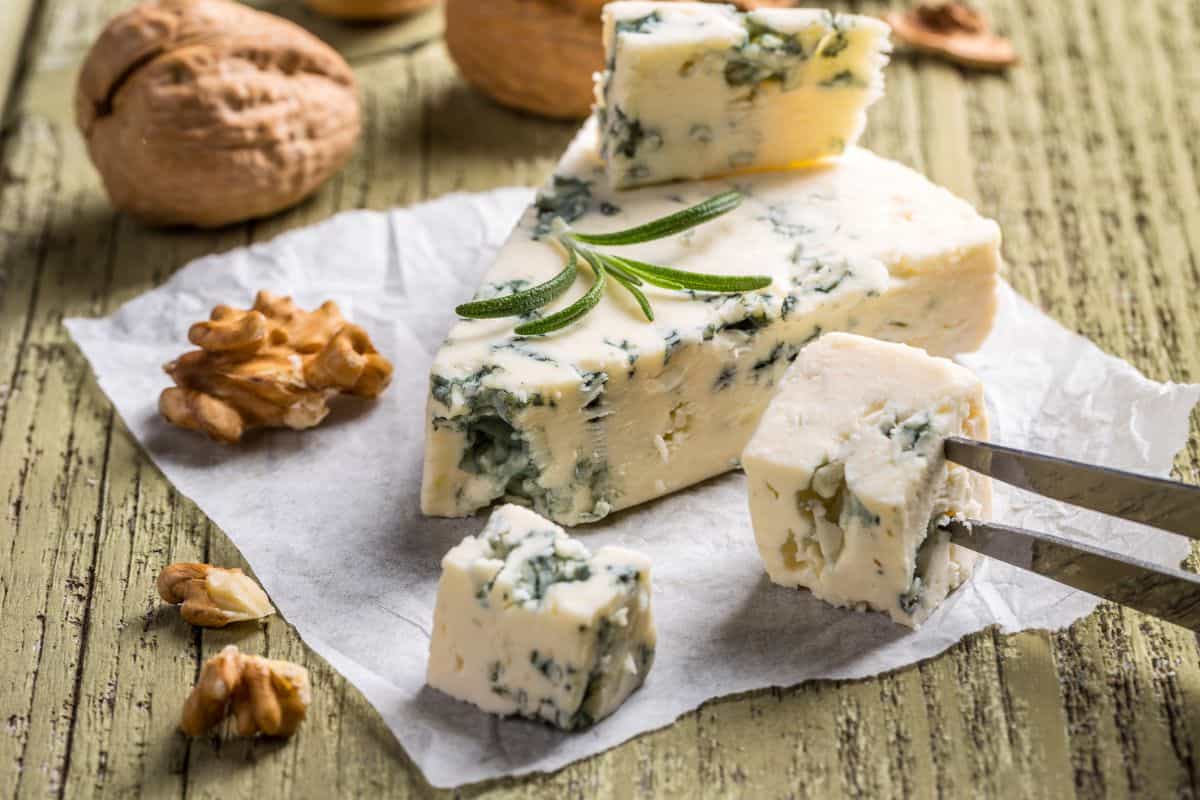
What Is the Difference Between Gorgonzola and Blue Cheese
Is Gorgonzola the same as blue cheese? While they share many similarities, there are a few important differences between them.
Gorgonzola is almost always made exclusively with cow’s milk, while a regular blue cheese may involve cow’s, goat’s, or sheep’s milk.
Gorgonzola tastes milder than other blue cheeses, and it has an even softer texture than its relatives. Note that milder isn’t the same thing as mild overall. Most blue cheeses have a strong flavor, so Gorgonzola is still stronger than some other options you might see on the market.
Finally, blue cheeses can come from all over the world, but authentic Gorgonzola is always from a small part of Italy. That means real Gorgonzola has exacting quality standards and ensures you’re always getting a good product.
What Is Blue Cheese
Blue cheese is any form of cheese ripened with the cultivation of Penicillium, the same mold fungi used for creating the famed antibiotic penicillin.
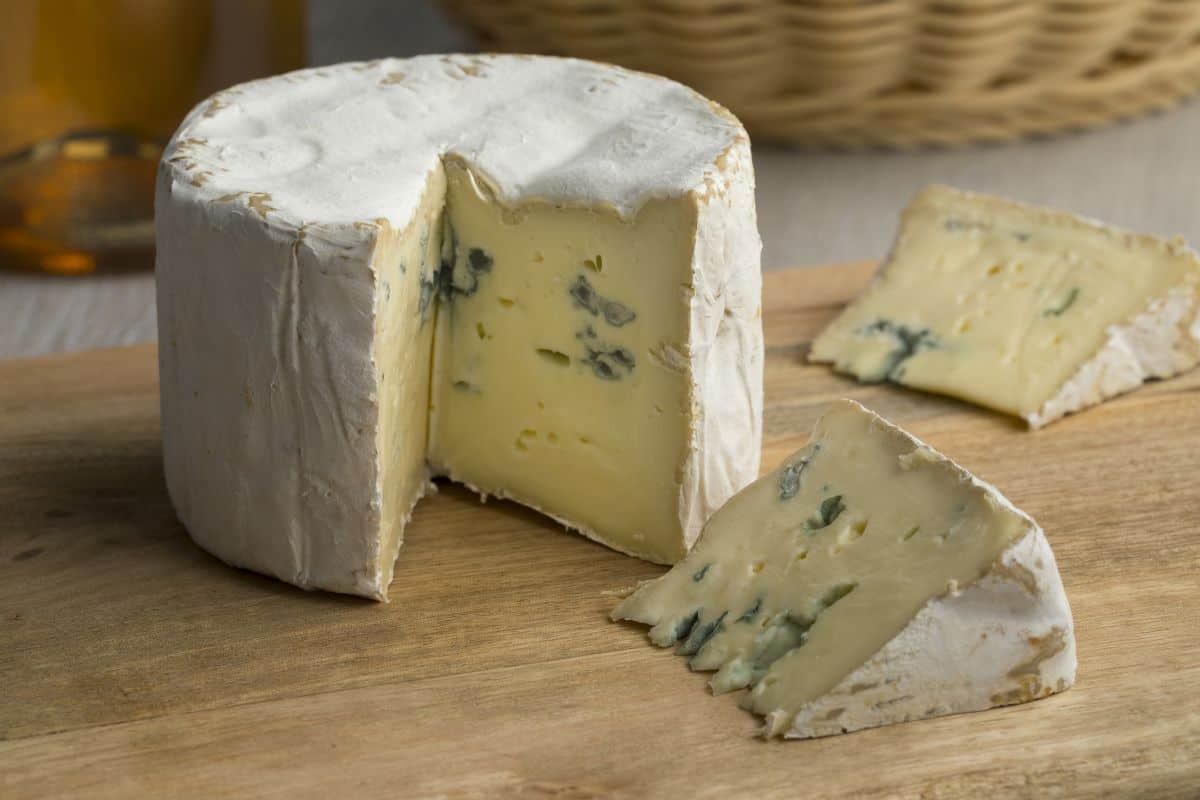
As its value in medicine indicates, this mold is edible and broadly safe to eat in cheese. Penicillium does not produce toxins the way that other molds do.
Is Blue Cheese Mold
No. It’s more accurate to say that blue cheese contains mold, but it is not entirely mold. The mold is usually a relatively small percentage of the cheese’s total volume, but it has enough flavor to give blue cheese its distinctive taste.
The mold within a blue cheese is often known as marbling, and it can vary significantly through manufacturing processes. Some blue cheeses have long vertical stripes of mold, while others have dense ripples that can resemble fat found in meat.
Softer and solid blue cheese usually has straighter veins of mold, while semi-firm and crumbly blue cheese has much more aggressive marbling.
The mold within blue cheese does not continue growing while it’s in your fridge, so what you see is what you’re going to get when you buy it. The mold needs a properly balanced acidity, which isn’t available when the cheese is too young. However, it also needs nutrients from the cheese, which it will consume as the cheese ages.
Cheesemakers deliberately stop the growth process by moving the aging cheese to cooler areas for the rest of their aging, ensuring the mold doesn’t completely consume the cheese.
How To Make Blue Cheese Dressing
There are many ways to make blue cheese dressings. If you’re looking for something a little more solid, some interesting hemp seed recipes using blue cheese are available.
For a simple dressing recipe, mix 1/4 cup each of sour cream and mayonnaise with two ounces of crumbled blue cheese. You can add small amounts of parsley or fresh lemon juice for flavor, a pinch of salt and pepper, and optionally some milk to thin the dressing if it’s too thick for you.
Is Blue Cheese Good for You
Blue cheese is relatively healthy for a cheese product. It’s high in calcium, with most varieties of blue cheese offering at least 150mg of calcium in each one-ounce serving. This is about 15% of the minimum daily value experts recommend.
Blue cheese may help reduce abdominal fat and improve overall gut health. A specific compound in blue cheese, spermidine, is also thought to help delay aging and protect cardiovascular health.
However, blue cheese is also somewhat salty and fatty. This is acceptable in a good diet, but you’ll need to watch what else you’re eating.
How Is Blue Cheese Made
Blue cheese’s manufacturing process is well-documented, being hundreds of years old and essentially mastered to ensure consistent quality. Most blue cheeses originate in France and Italy, but it’s also possible to cultivate them in many other areas.
The modern production process starts by pasteurizing milk (cow’s, goat’s, or sheep’s), which uses heat to help destroy any pathogens in the milk. Blue cheese involves deliberately growing mold, so it’s even more important than usual to prevent contamination from other types of stores. Some versions use raw, unpasteurized milk, though.
Once the milk is ready to go, cheesemakers will add a starter culture to it. This helps convert the lactose within the milk into lactic acid, which starts solidifying the cheese. Blue cheese is traditionally soft to semi-firm, so it’s important to avoid making it too solid.
After it’s solid enough, cheesemakers add rennet to the mix. Rennet is a vital part of most cheesemaking processes and helps finalize the creation of a solid mass. The solid cheese here is easy to form into wheels.
All of this is standard for cheesemaking, but it’s at this point the process starts to differ. Once the wheels are ready, cheesemakers add their mold of choice by sprinkling it over the cheese. Salting comes immediately after, which helps prevent spoilage but also gives blue cheese a distinctly saltier taste.
The cheese ages for 2-3 months, but early in this process, cheesemakers will pierce it with stainless steel rods. This makes it much easier for the mold to grow down into the cheese and is why it tends to grow down in straight lines.
Other steps of the process may vary depending on the type of cheese. Different techniques produce different cheeses, so every blue cheese sold around the world has a unique, distinct flavor.
It’s possible to create blue cheese at home. Many companies sell kits that can let you make cheese, including spore packs for the mold to help ensure it grows. However, you’ll need to manage the environment to ensure it’s safe to eat, and that can be challenging without specialist equipment.
Can Dogs Eat Blue Cheese
No. Blue cheese often creates a chemical known as roquefortine C as it ages, which is toxic to dogs. This substance may not be present in new cheese, but if dogs find old cheese in the trash, it could make them sick.
The best way to avoid this issue is by not letting them eat blue cheese at all. For that matter, most cheeses are bad for dogs, although cottage cheese without added dairy products may be suitable for dogs recovering from illness.
Dogs tend to like cheese even though it’s unhealthy for them, so you can use small amounts to camouflage medication if needed. Regardless, the best option is to talk to your vet before giving a dog any cheese.
Can You Eat Blue Cheese While Pregnant
No, you should not eat blue cheese while pregnant. Like Gorgonzola, blue cheese is usually too moist and soft to eat safely while pregnant. It’s not necessarily risky to have a small amount, especially if it’s in a processed product like store-bought dressing, but we recommend being as safe as possible.
Does Blue Cheese Go Bad
Yes. Like all cheeses, blue cheese can go bad. The specific variety of penicillium used in cheese is different from the one that makes the antibiotic. So the penicillium doesn’t naturally kill other varieties of mold that can grow near it.
Blue cheese can have a pungent odor, to begin with, so it’s best to get familiar with how it smells normally. That will make it significantly easier to tell if your cheese goes bad later.
Most blue cheese will last at least three weeks after opening, and it has a shelf life of somewhere between one to six months. The packaging should clearly label how long the manufacturer expects it to stay good. Avoid any blue cheese that doesn’t have a clear Use By date.
Solid chunks of blue cheese tend to last longer than crumbles. Crumbles have much more room for airflow, which significantly reduces their shelf life in comparison to other options.
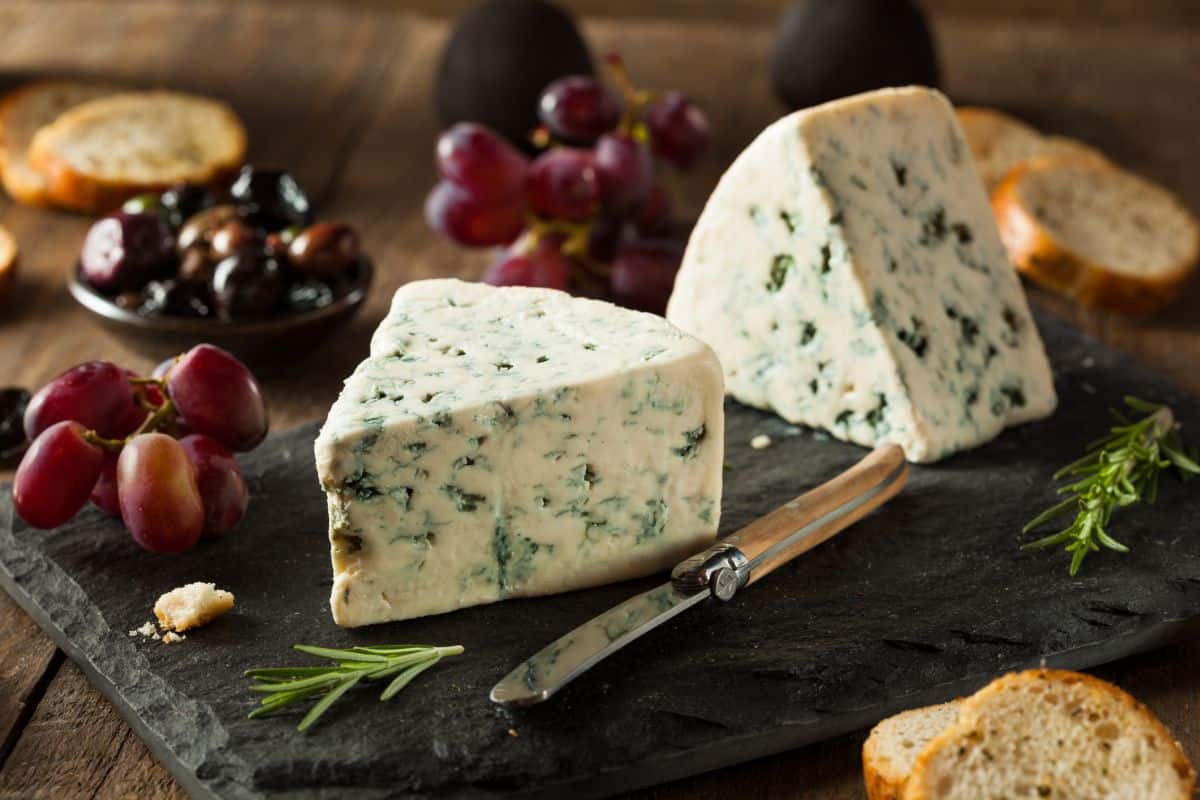
What Does Blue Cheese Taste Like
The flavor of blue cheese depends heavily on the mold used to cultivate it. The most common choice for blue cheese is Penicillium roqueforti, which people often describe as being spicy, sour, or peppery. Blue cheese has a stronger flavor than Gorgonzola, so you’ll notice the difference.
Some cheesemakers also use penicillium glaucum, a similar blue mold. This strain is significantly milder in flavor, with some describing it as similar to chocolate or toasted hazelnuts. Manufacturers may not always label their cheese with the type of mold they use, so consider contacting them directly to find out if they make anything with p. glaucum.
However, a bad or poorly-made blue cheese may taste like vomit. That’s right, vomit. The culprit in these cases is butyric acid, which the body creates in the stomach. Butyric acid has a famously unpleasant and rancid odor, so blue cheese that goes too far in production may be hard to stomach.
Can You Freeze Blue Cheese
Freezing blue cheese is a complex process. It is possible to do well, but it may take some practice to do it correctly. Here’s how to do it right.
Start by cutting the cheese into smaller pieces based on how much you expect to use at a time. This makes it significantly easier to thaw and use. Leaving it in one block may negatively affect your cheese when you thaw it.
This is easier to do with a more solid version of blue cheese, but more difficult with versions that are already crumbly and prone to falling apart. If you bought one of those, consider eating it faster.
Once you have your cheese in appropriately-sized chunks, wrap them in a double layer of plastic wrap. One layer isn’t quite enough for the freezer. A double layer will be much more effective at keeping away both freezer burn and other flavors.
Place all of your wrapped pieces of cheese in a thick freezer bag or similar appropriate container, then squeeze all the air out. Having less air will significantly extend the lifespan of the cheese.
Use the cheese within two months of freezing for the best results.
To thaw blue cheese, remove it from the freezer and put it in the fridge for at least several hours. Once it’s done thawing, let it sit at room temperature for about half an hour. This will ensure it has time to develop a better flavor before eating it.
Use thawed blue cheese within two days of taking it out of the freezer, and do not refreeze it.
Does Blue Cheese Have Mold
Yes. All blue cheese has mold by definition because it’s a required part of the production process. If you don’t see mold on the inside of the cheese, it can’t be blue cheese.
Is Blue Cheese Dressing Keto
Most types of blue cheese dressing are acceptable for a keto diet. Blue cheese itself is keto-approved, with minimal carbs and enough fats for energy. However, some additives in the dressing may stop it from being Keto-friendly, so the only way to evaluate this is on a case-by-case basis.
Is Kraft Blue Cheese Dressing Keto
No. Kraft’s blue cheese dressings are a poor choice for Keto diets. These dressings typically have too many carbs and too much sugar to help you stay in ketosis. Kraft’s dressing also has soybean oil and propylene glycol. Both are bad for Keto-focused diets.
If you can find them, Toby’s and Pigtale Twist sell especially Keto-friendly dressings. Athenos, 365, Tessamae’s, Marie’s, and Walden Farms aren’t quite as Keto-friendly and have at least one bad ingredient, but it’s possible to manage keto with them.
Is Blue Cheese Gluten-free
Another question in the Gorgonzola vs. blue cheese debate is simple: are either of these cheeses gluten-free?
Most blue cheeses are functionally gluten-free all by themselves, rarely containing more than about 20 ppm of gluten. However, the mold spores may be grown on bread, which exposes them to gluten. Some manufacturers make a point of growing mold spores through other methods, making them an even better choice for gluten-free diets.
Is Blue Cheese Pasteurized
Some blue cheese is made with pasteurized milk. Any dairy products that aren’t pasteurized at some point in their creation must be labeled as such in the United States. Pasteurized blue cheese is generally safer.
Leave a Reply